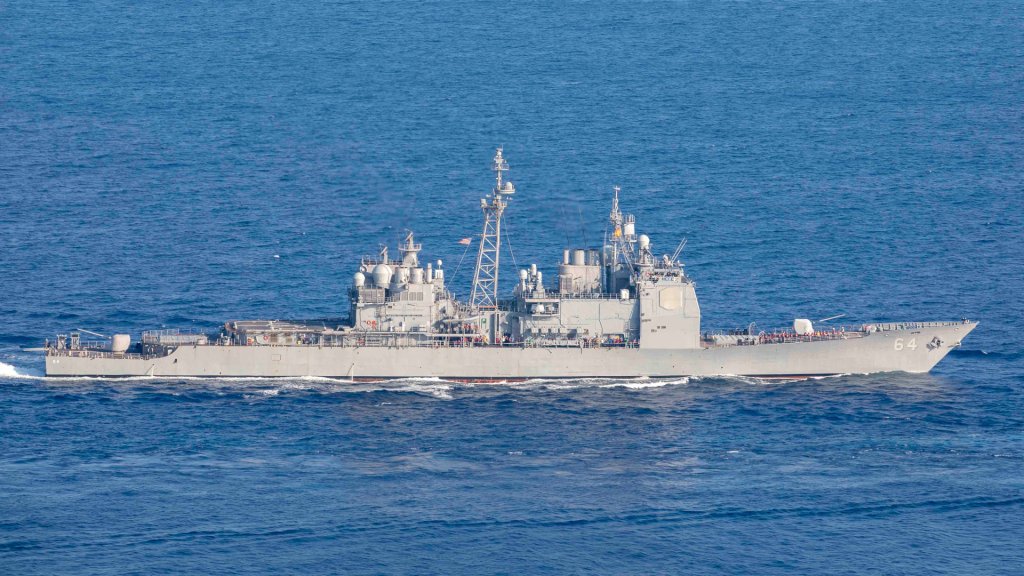China is rapidly narrowing the gap with the United States in vertical launch system (VLS) missile capacity, a key indicator of naval strength, according to a new analysis by the International Institute for Strategic Studies (IISS), a UK-based think tank.
The report, published on December 20, disclosed that China’s Navy, known as the People’s Liberation Army Navy (PLAN), has surpassed 50% of the US Navy’s firepower in VLS-equipped surface ships as of 2024, with the disparity expected to shrink further.
The VLS is a crucial component of modern warships, which allows them to carry a range of missiles for air defense, anti-ship operations, and land attacks. The report revealed that by the end of 2024, the US Navy operated 85 VLS-equipped surface warships, just one more than China’s 84.
Johannes Fischbach, a maritime research analyst at IISS who authored the report, pointed out that the PLAN has made good progress in the past two decades.
“A 20-year comparison highlights the increase in the PLAN’s capacity. While it had less than 1.5% of US Navy capacity in 2005, this grew to over 13% by 2015. As 2024 ended, this had reached more than 51%,” Fischbach noted. Between 2021 and 2022 alone, China added more than 1,260 new VLS cells to its fleet.
U.S. Navy Warship Seized By North Korea, Crew Detained! Recalling The “Shocking” Story Of USS Pueblo

However, the shift is not solely due to China’s advancements. The US Navy has seen a decline in its VLS capacity, mainly due to the retirement of its aging Ticonderoga-class cruisers, which have long been the most heavily armed U.S. surface platforms in terms of VLS cells, with each ship carrying 122 cells.
Moreover, the construction of new US warships has not kept pace with the diminishing number of aging vessels nor with China’s rapid production of new warships.
The report further predicted, “The gap between the capacity of the US Navy and that of the PLAN is set to continue to close for the foreseeable future.”
The Role Of VLS In Modern Naval Warfare
According to the Pentagon’s annual report on Beijing’s military, China currently commands the world’s largest navy, with more than 370 ships and submarines, including over 140 major surface combatants.
This force is set to expand, with projections indicating it could grow to nearly 400 vessels by next year and reach 435 by the decade’s end.
However, the US Navy still holds several advantages. Its VLS-equipped platforms, such as the Arleigh Burke-class destroyers, are integrated with the advanced Aegis combat system, a key edge in operational experience and missile defense capabilities.
Despite the aging of some platforms, the US Navy has opted to extend the service life of its oldest Arleigh Burkes and three Ticonderoga class cruisers, postponing their retirement beyond initial plans.
Meanwhile, China’s modern ships, such as the Renhai-class destroyers with 112 VLS cells, are entering service at a rapid pace.

The ability to carry many vertical-launch system (VLS) cells offers several tactical advantages. It allows a warship to launch many missiles before needing to reload, a task that’s difficult to accomplish at sea and typically requires a return to port.
VLS technology also provides greater flexibility and faster salvos than traditional arm launchers. For example, the US-made Mark 41 VLS can fire various missiles to target land, surface, air, and space-based threats. It can even launch anti-submarine rockets (ASROC) that deploy torpedoes into the ocean from precise locations chosen by the ship’s captain.
The US has already faced high munitions expenditure rates during its conflict with Houthi rebels in Yemen. However, a potential conflict with China would demand far greater munitions use.
While the number of VLS cells serves as an important metric of a navy’s firepower, it does not encapsulate the full complexity of naval warfare.
Other critical elements, such as the dimensions and operational capabilities of launch tubes and the variety of munitions employed, play a vital role in shaping combat effectiveness. In a potential US-China conflict, the efficacy of air defenses and countermeasures would be equally pivotal.
Moreover, naval warfare extends beyond surface ships. Anti-ship missiles can be launched from land-based platforms or aircraft, and submarines with missile tubes are also critical. The US Navy maintains a considerable underwater advantage over China in this area.
The US Navy retains an edge in its VLS-equipped submarine force, a critical component that China is only now beginning to develop.
The US’s fleet of Ohio-class nuclear-powered guided-missile submarines, each carrying 154 VLS cells, remains unmatched. However, with the impending retirement of the Ohio-class submarines, this advantage may diminish in the coming years.
- Contact the author at ashishmichel(at)gmail.com
- Follow EurAsian Times on Google News




